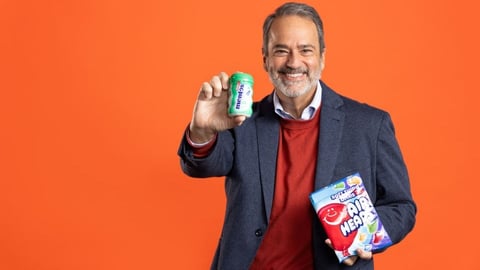Kraft Heinz Building KraftGPT Generative AI Assistant As It Moves Toward ‘Self-Driving’ Supply Chain
Kraft Heinz is building an internal generative AI app, known as KraftGPT, for employees to obtain quick insights into such things as product sales.
The app is “kind of like an ‘Ask Me Anything’ app,” said Helen Davis, SVP, head of North America operations at Kraft Heinz. Employees can query such things as, “Why are we selling so much bacon?” or “Why does everyone love it so much all of a sudden? What’s happening?”
The company joins such CPGs as Colgate-Palmolive and Johnsonville in developing genAI copilots for their organizations, and Davis shared the details as part of an NRF panel in New York on Sunday that showcased various ways consumer goods companies and retailers are leveraging data science and artificial intelligence to improve their supply chains.
The current priority for Kraft Heinz is creating a “self-driving supply chain,” explained the exec. This includes implementing technologies that let factories predict when a line will go down, as well as within its forecasts to better understand data from their customers.
Atop this data sits a “cognitive decision layer” that’s creating a digital twin of everyone in the supply chain and reacting as if they would when taking such actions as moving products or changing production schedules.
“All that is happening very autonomously. That helps us — and this was a great learning from the pandemic — to really react to that consumer changing demand very, very autonomously [and] very quickly,” she said. “It’s about getting 500 employees in an instant making those decisions.”
Kraft Heinz Data Science
Davis has about 50 data scientists dedicated to her operations organization, and they work as a trio with their functional leads and with IT in order to feed transactional data into the Kraft Heinz data lake.
The groups of data scientists, which work in Agile pods that align with the company’s larger “Agile@Scale” strategy, go on weekly sprints and report out to the Kraft Heinz cross-functional leadership team on a quarterly basis.
Davis credited the pods structure as enabling the No. 21 publicly owned consumer goods company to act quickly, including its moves into generative AI.
“What I think is so beneficial is that we have the senior leadership support, we have the resources, we have the funding available, and I think that's why we're moving quicker than most organizations.”
In addition to having more strategic conversations with its retail partners about the additional insights Kraft Heinz can provide in forecasting, the CPG is also making moves to pull these insights all the way through to its farmers.
It’s making progress in creating end-to-end visibility that connects its retail store shelves to its farmers, according to Davis. For example, when a competitor has gone out of stock, they are working on improving how quickly they can send the signal through their supply chain in order to have the right conversations with its retail partners, she said.










